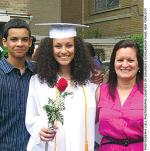In its 10th annual survey of American public opinion, conducted in May and June of 2016, Education Next finds that the demise of school reform has been greatly exaggerated. Public support remains as high as ever for federally mandated testing, charter schools, tax credits to support private school choice, merit pay for teachers, and teacher tenure reform. However, backing for the Common Core State Standards and school vouchers fell to new lows in 2016.
General Audience Articles
Over the past 25 years, charter schools have offered an increasing number of families an alternative to their local district schools. The charter option has proven particularly popular in large cities, but charter-school growth is often constrained by state laws that limit the number of students the sector can serve. In the 2016 election, for example, voters in Massachusetts rejected a ballot question that would have allowed further expansion of charters in communities that had reached the state’s enrollment ceiling.
This is the last issue of Education Next for which I will serve as editor-in-chief. In an era when many magazines have disappeared from newsstands, it is an honor that so many of you continue to find the journal’s material worthy of your consideration.
At the turn of the 21st century, the United States was trying to come to grips with a serious education crisis. The country was lagging behind its international peers, and a half-century effort to erode racial disparities in school achievement had made little headway. Many people expected action from the federal government.
As the use of technology in schools grows rapidly—whether in blended-learning environments, for project-based learning, or just because it’s the fad du jour—how much time students should spend learning on a computer is a point of contention. More and more people seem to agree that digital learning in K–12 classrooms works best when it is used with the oversight of a teacher. The chants of “teachers not technology” and “laptops for layoffs” increasingly appear to be relics of the past.
A star has at least five points. So I was told by a senior colleague at a time in my life when I was desperately trying to figure out how to burnish just one. Even by that standard, James S. Coleman is securely situated in a celestial constellation, as five points can be discerned even if one looks only at his research on schools.
The American public is displaying its independent streak. Critics of testing will take no comfort from the findings of the 2015 Education Next poll—but neither will supporters of the Common Core State Standards, school choice, merit pay, or tenure reform. The unions will not like the public’s view on their demands that nonmembers contribute financially to their activities.
In 1996, Cardinal John J. O’Connor, archbishop of New York, proposed to Rudy Crew, chancellor of the New York City public school system, that the city’s most troubled public-school students be sent to Catholic schools, where he would see that they were given an education. New York City’s mayor at that time, Rudolph Giuliani, a voucher supporter, attempted to secure public funds that would allow Catholic schools to fulfill the cardinal’s offer. But voucher opponents condemned the idea on the grounds that it violated the no establishment of religion clause of the First Amendment.
The United States’ failure to educate its students leaves them unprepared to compete and threatens the country’s ability to thrive in a global economy, ” claims a task force sponsored by the Council on Foreign Relations chaired by former New York City schools chancellor Joel I. Klein and former U.S. secretary of state Condoleezza Rice.
“The United States’ failure to educate its students leaves them unprepared to compete and threatens the country’s ability to thrive in a global economy.” Such was the dire warning issued recently by an education task force sponsored by the Council on Foreign Relations. Chaired by former New York City schools chancellor Joel I. Klein and former U.S. secretary of state Condoleezza Rice, the task force said the country “will not be able to keep pace—much less lead—globally unless it moves to fix the problems it has allowed to fester for too long.” Along much the same lines, President Barack Obama, in his 2011 State of the Union address, declared, “We need to out-innovate, out-educate, and out-build the rest of the world.”
Children raised in families with higher incomes score higher on math and reading tests. That is no less true in the Age of Obama than it was in the Age of Pericles or, for that matter, in the Age of Mao. But is parental income the cause of a child’s success? Or is the connection between income and achievement largely a symptom of something else: genetic heritage, parental skill, or a supportive educational setting?
Undoubtedly, the United States has much to learn from education systems in other countries. Once the world’s education leader, the U.S. has seen the percentage of its high-school students who are proficient trail that of 31 other countries in math and 16 countries in reading, according to a recent study by Harvard’s Program on Education Policy and Governance (PEPG) (see “Are U.S. Students Ready to Compete?” features, Fall 2011). Whereas only 32 percent of U.S.
At a time of persistent unemployment, especially among the less skilled, many wonder whether our schools are adequately preparing students for the 21st-century global economy. Despite high unemployment rates, firms are experiencing shortages of educated workers, outsourcing professional-level work to workers abroad, and competing for the limited number of employment visas set aside for highly skilled immigrants. As President Barack Obama said in his 2011 State of the Union address, “We know what it takes to compete for the jobs and industries of our time.




